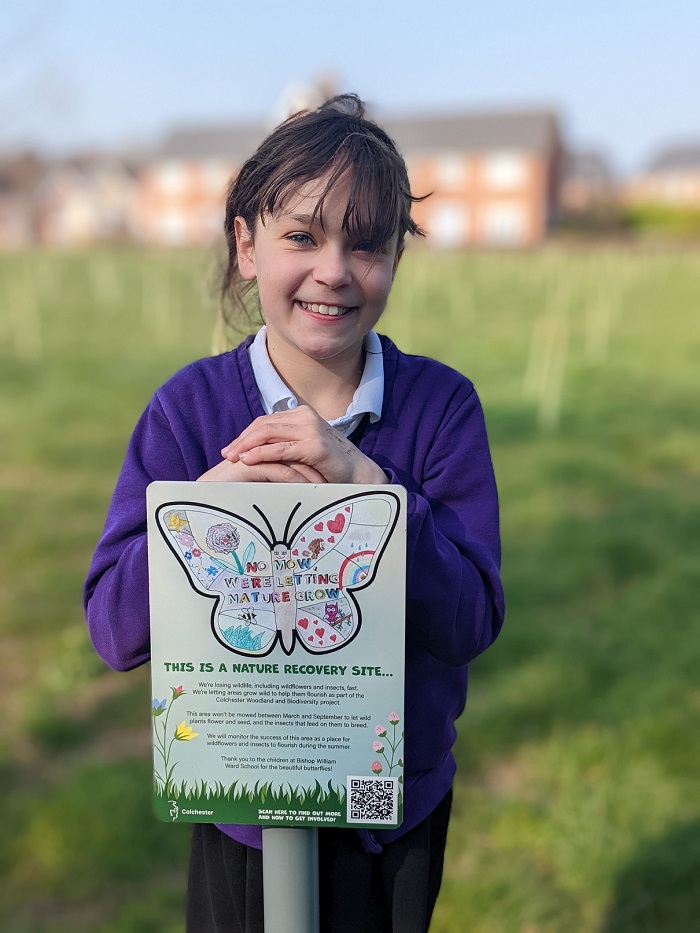New butterfly signs designed by school children across the borough have been installed in several areas of green space, to highlight that either the grass cutting regime in these areas has changed or that the area has been left to naturalise – as part of the Colchester Woodland and Biodiversity Project.
The grass cutting regime in 10 areas has changed from once every three weeks to once at the end of the growing season (around mid-autumn), with a further 14 areas left to naturalise to encourage wildflower growth and help develop the area for invertebrates such as bees, butterflies and moths.
Changes have been made with the aim of benefitting pollinators and other insects, which are hugely important for many things, including the regulation of the natural environment and the food system.
The council worked with local school children to help design the butterfly signage for these areas, in a bid to help educate them around the project and of the importance of looking after and supporting the environment to flourish. Signs have been produced from designs by children at Roachvale, Bishop William Ward and Broomgrove Junior primary schools. Bishop William Ward school ran a competition and Lydia Wynter produced the winning design and was invited along to see her design in place.
Dan Gascoyne, Deputy Chief Executive at Colchester Borough Council, said: “A big part of the Colchester Woodland and Biodiversity Project is finding ways to support biodiversity, such as wildflowers and the needs of insects, and involving and educating people, particularly school children, on just how important for the environment this activity is. I think the signs designed by the school children are great!”
Toby Bull, Headteacher at Bishop William Ward C of E (VA) Primary School, added: “The children love to get involved in the local community and this generation have a real passion for environmental issues and the future of our beautiful planet. Our Friends Association ran a competition to design the signs and we had some amazing artwork produced. Lydia was thrilled to be announced as the winner of the competition and seeing her sign in place is a moment of great joy.”
The council started this approach in several areas, in 2020, and have plans to extend it to more areas across the borough. They have also been planting wildflowers across these areas to continue to help biodiversity flourish.
The council has also worked with Wivenhoe Town Council who began a trial in March 2021 to alter the way selected verges and areas of open space are managed to encourage wildflower or naturalisation and better biodiversity. They have also worked with Colchester Borough Homes to identify areas to create wildflower verges in Greenstead.
Whilst it may be perceived that weeds and long growth of plants and flowers can look unruly, this approach has been adopted by other councils, and the wildflowers look very visually attractive during the growing season, as well as supporting wildlife and our environment.
To keep up to date with the project visit https://www.colchester.gov.uk/better-colchester/colchesterwoodlandbiodiversity/.
Pictured above: Lydia Wynter, Bishop William Ward Primary School
Page last reviewed: 20 April 2022
